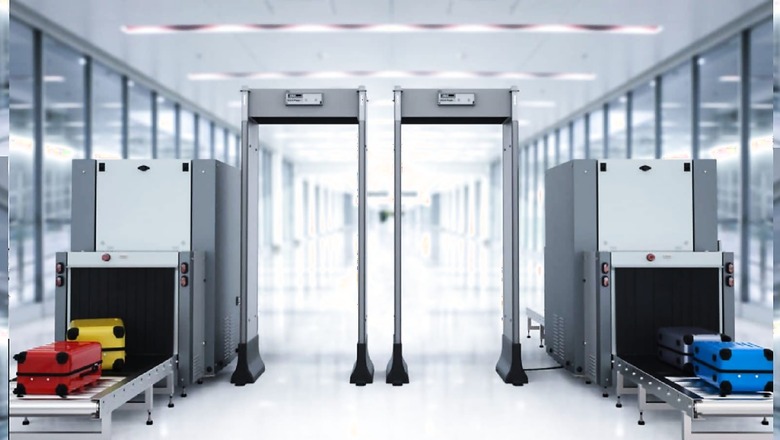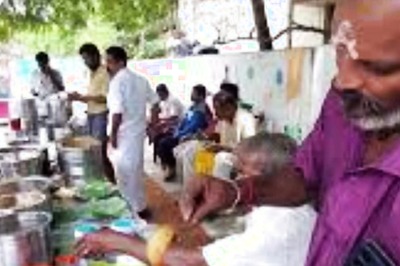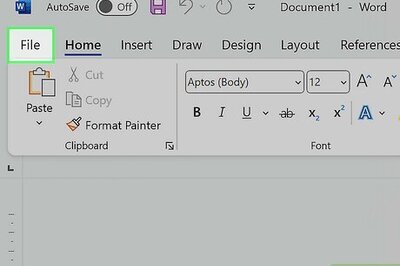
views
Visiting airport to catch a flight is a whole different experience than travelling on a train or a car. There’s an overwhelming fear of travel despite best of the scrutiny one has to go among any form of transportations. While popular culture like multiple hijacking movies are partly to be blamed, the devastating 9/11 events also changed the perception of air travel.
But there’s also another side of events that unfolded post 9/11 attacks. The air travel and aviation industry changed its course like it never did in the past, something which our generation is witnessing in the post-covid travel.
Changing how airports behave is a evolutionary process, but often, events like 9/11 and coronavirus alter the airport dynamics overnight. While 9/11 happened on the American soil, it had a global effect, for US has always been seen a leader in global air travel, with most number of international and domestic flights operating everyday.
These long security queues, intrusive CCTV cameras, baggage screening, no entry in cockpit and more were all part of post 9/11 security revamp in the US, which slowly altered the aviation industry globally. The biggest change was formation of Transportation Security Administration (TSA), a government airport body that replaced the private companies that airlines were hiring to handle security.
We decode how aviation industry as a whole changed post 9/11 and how air travel was impacted by the events that unfolded 20 years ago on this date-
ID Check
As revealed in the post 9/11 analysis, some of the hijackers boarded the flights without proper identification. Earlier, your flight ticket used to be your identification and not emphasis was paid on photo ID proofs, especially in domestic flights. Things, however changed after the attacks as all passengers need a valid government-issued identification in order to fly.
Not only at the entry gates, or boarding points, your ID can be checked randomly by Airport Security if you are found doing anything suspicious. Now-a-days, many airports are using Facial ID, Iris Scans and Fingerprints scans to further increase the security at the airports. One thing is for sure, keep your IDs always handy, for you can be asked to get it checked at least 3-4 times during your air travel.
Security Screening
With evolving technology, baggage screening has also evolved with new-age machinery identifying even the slightest trace of gunpowder, or explosives. Each new requirement makes the checkpoint lines longer, and that is why it is advised to reach airports at least 2-3 hours earlier to catch a flight. But these rules are convoluted to a point where they mystify the travellers.
Travellers who don’t fly regularly don’t know what to carry and what not to carry. While your check in baggage is mostly allowed to carry almost everything apart from dangerous goods and battery packs, your hand baggage is the one that goes through a thorough security check, something that you always wonder as to what they are looking for. From removing laptop to water bottles and any sharp object, it’s a pain staking effort to check each and every small packet and bag and maintain such level of security.
Not just baggage screening, personal screening has also evolved post 9/11 to an extent many have complained privacy breach. After security agency has a different way of frisking passengers. While some prefer metal detectors only, some use both metal detector and hand frisking as a method. Even metal detectors are in two forms – door detector and hand held device.
Few agencies like TSA also played with full body scanners in the past, only to remove it after privacy concerns. Not only this, you are even asked to remove belts, jackets and shoes now a days, with all pockets empty. From show bomber to liquid explosives, every incident forces security agencies to keep shuffling and evolving the security checks.
Secure Cockpit
The cockpit of the aircraft is the sanctum sanctorum of the plane, with two or more than two pilots and co pilot handling the flight. Every hijacking attempt is eventually aimed at taking the control of the cockpit and to use the plane as per the will of the hijackers. But if the cockpit is not opened at all, the plane can’t be used as a missile, or a weapon as in the case of 9/11. Given the same, the entry of crew and staff was limited post 9/11. One can only open the cockpit from outside using a pin code.
From inside, the pilot has a view outside cockpit to check who’s entering the area and can lock it remotely despite one trying to put a pin code from outside. A random roaster allocation is done with both pilots and crew so that no two members are flying together all the time. If a pilot has to use washroom, the crew secure the area with food trolleys to stop unwanted passenger movement in the galley. Unlike pre 9/11 when pilot allowed family members or friends to visit the cockpit, none could enter it in flight. However, pilots do allow kids to visit cockpit when in parked state.
TSA
One of the biggest change that happened post 9/11 was the government back security agencies globally and more specifically in the USA where, as a part of the new security act, the Transportation Security Administration (TSA) was introduced in November 2001. Earlier, airports used private agencies to take over security functions of the airports.
Read all minute-by-minute news updates for Uttar Pradesh election results 2022, Punjab election results 2022, Uttarakhand election results 2022, Manipur election results 2022, and Goa election results 2022.
Click here for seat-wise LIVE result updates.




















Comments
0 comment